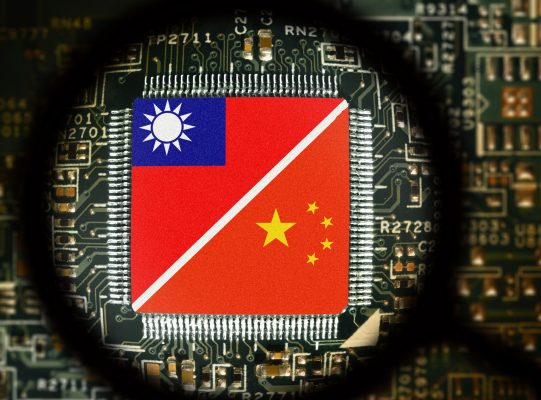Introduction: China’s Surge in PCB Production
China is expected to surpass Taiwan and become the world’s largest producer of printed circuit boards (PCBs) in 2024, according to a recent industry report. This shift in global PCB production leadership is attributed to China’s aggressive production strategies and government-backed initiatives, which aim to solidify its position as a leader in the global electronics manufacturing sector.
According to a study by the Taiwan Printed Circuit Association (TPCA) and the Industrial Technology Research Institute, China’s PCB output value is projected to reach US$26.79 billion in 2024, a 16.6% year-on-year increase. This growth would give China a commanding 32.8% share of the global PCB market.
The Rise of China’s PCB Industry
Printed circuit boards (PCBs) are a vital component in modern electronic devices, connecting and supporting electronic components through conductive tracks and pads. As the demand for electronics grows, so does the need for PCBs, making this industry a critical player in the global supply chain.
The TPCA report indicates that China is on track to surpass Taiwan in terms of PCB production in the coming year. The report outlines that China’s PCB production will be fueled by both increased domestic demand and strategic government subsidies that encourage local manufacturing, enabling Chinese companies to scale up and reduce reliance on foreign imports.
Key Drivers Behind China’s PCB Growth
Several factors have contributed to China’s growing dominance in the PCB industry:
- Government Support and Subsidies: Chinese PCB manufacturers benefit from government subsidies, allowing them to offer competitive prices and boost production capacity. This has enabled them to rapidly scale up operations and capture a larger share of the global market.
- Focus on Semiconductor and Automotive Industries: In line with its “domestic replacement” strategy, China has heavily invested in sectors such as semiconductor manufacturing and electric vehicles (EVs). These industries are major consumers of PCBs, contributing to the increase in PCB demand.
- Substitution of Imported Components: As part of its goal for semiconductor independence, China has been pushing for domestic production of components that were traditionally imported. This drive has led to significant investments in high-end PCB products, particularly those used in AI chips, memory modules, and EV systems.
- Shift in Apple’s Supply Chain: Apple’s shift to relying on Chinese suppliers for high-density interconnector (HDI) PCBs and flexible printed circuits has also reduced Taiwan’s dominance in these areas, further contributing to China’s rise.
Taiwan’s Response: Shifting Focus to Emerging Technologies
While Taiwan may lose its position as the world’s largest PCB producer, Taiwanese companies are pivoting toward emerging technologies to maintain their competitive edge. According to senior analyst Chiu Shih-fang from the Taiwan Institute of Economic Research, Taiwan’s PCB producers are increasingly focusing on high-value applications, such as:
- Artificial Intelligence (AI) Servers
- Low-Earth Orbit Satellites
- Automotive HDIs
These sectors are poised for rapid growth, and Taiwanese manufacturers are capitalizing on their expertise to meet the demands of new technologies. Moreover, Taiwan continues to lead in the production of integrated circuit (IC) substrates, a crucial component for semiconductor manufacturing, although China is also making strides in this area.
China’s Strategic Investments in Semiconductors and EVs
China’s push for semiconductor independence is another key factor in its growing PCB production capabilities. The third phase of China’s Integrated Circuit Industry Investment Fund focuses on investments in AI chips and high-bandwidth memory, both of which rely heavily on advanced PCBs.
Additionally, China has become a dominant player in the electric vehicle (EV) market, with more than 60% of global EV production. The Chinese government’s support of the local EV industry, including subsidies and tax exemptions, is also driving demand for locally produced PCBs, further boosting China’s market share in the global PCB sector.
Table: Projected Global PCB Market Share in 2024
| Region | Projected PCB Output Value (US$ Billion) | Global Market Share (%) | Key Factors |
|---|---|---|---|
| China | 26.79 | 32.8% | Government subsidies, semiconductor & EV focus |
| Taiwan | 25.30 | 31.0% | High-end PCB focus, AI, automotive HDIs |
| Japan | 9.30 | 11.5% | Integrated circuit substrates |
| South Korea | 8.50 | 10.4% | Advanced PCB manufacturing |
| Other Regions | 7.50 | 14.3% | Global demand for consumer electronics |
Frequently Asked Questions (FAQ)
1. Why is China expected to become the world’s largest PCB producer in 2024?
China’s expected rise to the top of the global PCB market is driven by government subsidies, a focus on semiconductor independence, and strategic investments in industries such as electric vehicles and artificial intelligence.
2. How will Taiwan respond to China’s growing dominance in PCB production?
Taiwan is shifting its focus to high-value applications like AI servers, low-Earth orbit satellites, and automotive HDIs. These technologies are poised for rapid growth, and Taiwanese manufacturers aim to leverage their expertise in these areas.
3. What are PCBs, and why are they important?
Printed Circuit Boards (PCBs) are essential components in electronic devices, providing the physical and electrical connections between various components. They are critical to the functioning of nearly all modern electronics.
4. What impact will China’s growth in PCB production have on global supply chains?
China’s rise in PCB production is likely to reshape global supply chains, especially in industries like semiconductors, electric vehicles, and consumer electronics, with China capturing a larger share of the market.
5. How is Taiwan staying competitive in the PCB industry?
Taiwan’s PCB industry is focusing on emerging technologies, including AI, automotive applications, and satellite technology. These high-value applications will help maintain Taiwan’s position as a leader in specialized PCB manufacturing.
